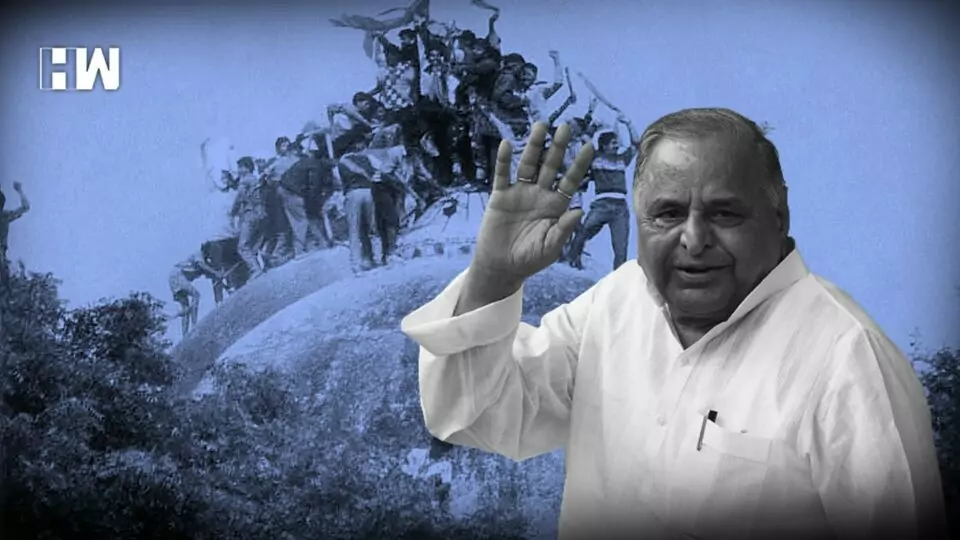Mulayam Singh Yadav’s tenure as Chief Minister is seen by many as uplifting the backward castes, SCs, STs, and minority communities.
Samajwadi Party founder and former Chief Minister of UP Mulayam Singh Yadav passed away at the age of 82. He was admitted to the Medanta hospital for the past few days, where he breathed his last.
Born on November 22, 1939, Mulayam Singh Yadav was one of the most prominent leaders of Uttar Pradesh who served as the Chief Minister of Uttar Pradesh thrice and has also served in the Union Government as the Minister of Defence.
He was elected 10 times as MLA and 7 times as Lok Sabha MP.
Some achievements of Netaji were:
‘Kanya Vidhya Dhan Yojana: The Mulayam Singh government in Uttar Pradesh launched the ‘Kanya Vidhya Dhan Yojana‘ which was an unemployment dole and fiscal management scheme aimed at the unemployed youth in the state. The Yadav government had earmarked a fund of Rs. 400 crores for the scheme under which each registered graduate unemployed was eligible to get an allowance of Rs. 500 per month.
Also Read:Uddhav Thackeray Suggests New Name And Symbol For Shivsena: Reports
Incentives to sugar mills: In 2004, Mulayam Singh Yadav’s government launched a scheme that gave liberal incentives to sugar mills, for 5 to 10 years- for increased production in companies that invested and upwards of Rs. 350 crores or more, for the production of sugar in the state.
Mulayam Singh Yadav’s tenure as Chief Minister is seen by many as uplifting the backward castes, SCs, STs, and minority communities.
However, one dark spot that neither he nor his son Akhilesh could wipe off and it still haunts the Yadav family ahead of every election is police firing on the kar-sevaks during the Ramjanambhoomi movement in 1990.
What happened on that dreadful day?
In 1990 veteran BJP leader LK Advani announced a nationwide Rath Yatra in September 1990.To build a Ram Mandir at the birthplace of lord Ram.
“Let them try and enter Ayodhya. We will teach them the meaning of law. No masjid will be broken.” CM Mulayam Singh Yadav had announced in October 1990, opposing Advani’s Rath Yatra.
LK Advani could not enter Ayodhya as he was arrested in Bihar by the Lalu Prasad government of the Janata Dal. But the Ayodhya campaign had seen a huge gathering of karsevaks (volunteers) in Uttar Pradesh city.
As they tried to march towards the Babri Masjid – intention not clearly declared – on October 30, a violent conflict erupted between the karsevaks and the police
On the morning of October 30, the police had barricaded about a 1.5 km-long pathway to the Babri Masjid. Ayodhya was under tight security. Section 144 had been imposed. Yet, sadhus and karsevaks marched toward the structure.
By noon, police received orders from then Chief Minister Mulayam Singh Yadav to open fire at the karsevaks. The firing led to chaos and a stampede. Police chased down the karsevaks in the streets of Ayodhya.
Another round of clash erupted on November 2, when the karsevaks came back and resumed their march towards the disputed site, this time with another strategy.
The karsevaks comprising also of women and elderly people would touch the feet of the security personnel deployed to prevent the demonstrators from marching ahead. Stunned by feet-touching gestures – two days after the firing incident – the security personnel would step back and the karsevaks would move forward to do a repeat.
The security people saw through the tactics and warned them. The karsevaks would not be deterred. The security forces responded by opening fire for the second time in three days.
Many lost their lives in the clashes. Official records showed 17 deaths but the BJP put the death toll higher. Among the dead were the Kothari brothers – Ram and Sharad – from Kolkata. They were seen atop the Babri Masjid on October 30 holding the saffron flag.
Their bodies were found on November 2 in a lane near the Hanuman Garhi temple, which is in the vicinity of the Ram Janmabhoomi-Babri Masjid site. It was alleged that police had dragged them out of a house and killed them. After the incident, Yadav was referred to as Mulla Mulayam by his political rivals.
While former Prime Minister Atal Bihari Vajpayee claimed 56 deaths, Mulayam Singh Yadav put the death toll at 28. On another occasion, Mulayam Singh Yadav said it was a “painful” decision to open fire but was taken in the “interest” of the country.
As an independent media platform, we do not take advertisements from governments and corporate houses. It is you, our readers, who have supported us on our journey to do honest and unbiased journalism. Please contribute, so that we can continue to do the same in future.

